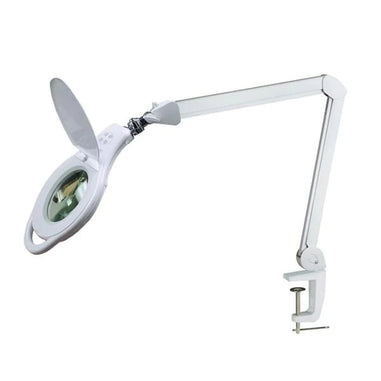- No products in the cart.
A compound microscope is built using two or more lenses with a typical magnification ranging from 40X to 1600X, although some are capable of higher or lower magnifications. Because only one objective is used at a time, and a single path of light is used, the viewer sees a two-dimensional image of the specimen. The microscope makes use of transmitted light illumination instead of reflective light illumination such as stereo microscopes. It can achieve higher levels of magnification than the latter and reduces chromatic aberration. The objective lenses used usually have a small focal length and very close to their target area. The second lens used in the eyepiece, the ocular lens, has a longer focal length and enlarges the image further. Contrary to a stereo microscope which gives great depth perception and produces a 3D image, the compound microscope produces a 2-dimensional image. It’s available in monocular, binocular and trinocular designs as well.

Other Components
Compound microscopes have a number of objectives (the lens closest to the object being viewed) of varying magnifications mounted in a rotating nosepiece.
The ocular and the objective lenses when grouped together can produce a total magnification of up to 2000X and can also go to a minimum of 4X magnification. These microscopes also have a condenser lens and an iris diaphragm which regulate light and direct how it falls on the specimen. Due to the nature of the light incident on the specimen and utilizing no reflection, the specimen has to be sliced thin to be analyzed much more completely.
Some have simply a disc that controls the amount of light allowed through, called a disc diaphragm, while others have a slider with an iris and adjustable positioning, and even more have a completely replaceable condenser, allowing more advanced microscopy methods to be used, such as darkfield and phase contrast.
How to Choose the Best Compound Microscope for you
There are some things that you will recognize only through going out and looking for good quality microscopes. However, the first thing to do is to only purchase from a verified and certified vendor. You don’t want to purchase from a local shop at a crazy discount and find out later that the microscope is not what you paid for.
Also, if you’re ordering online, you should only go for verified and trusted vendors that have been recommended by top ranking labs and research facilities. They buy these sorts of instruments to conduct official business so they’ll know the best places to go looking.
Important Factors
Aside from this you’re going to have to know what you’re looking for. If you’re doing this just as a hobby or for a specific project, you will want to know what the parameters are and what exactly you’re going to be using the microscope for.
Keep a magnification number in mind. Compound microscope total magnification is found by multiplying the objective magnification times the eyepiece magnification. For example, a 100X objective with a 10X eyepiece would give you a 1000X total magnification setting. If you want up to 1000X magnification, monocular microscopes will do just fine, however if you want something more powerful, binocular and trinocular microscopes are more suited for the job.
You should also go for ease of use for which the binocular microscope is perfect too.
If you want a very thorough examination of a complex sample, you should go for microscopes that include the mechanical stage of manipulation. Digital simply won’t do in this case. And the mechanical stage is usually included in the binocular set of microscopes, so again they are a safe bet.
Construction Quality
Try out the microscope before you purchase it. Make sure that it zooms in and out as advertised and if it’s got the ergonomic design that you wanted. Don’t be afraid to splurge a little on it, you’ll be surprised what an upgrade on top of the standard will do for your user experience.
Note: We offer a wide variety of compound microscope solutions that can be customized to meet your needs. They can be found in our Microscope section.












































